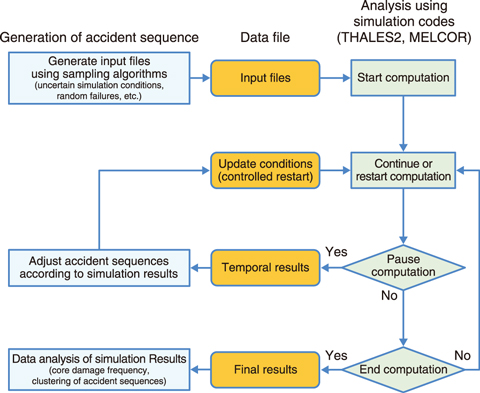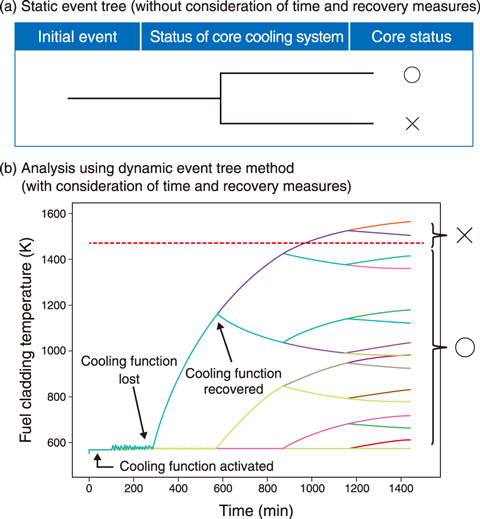
Fig.2-9 Framework of the dynamic probabilistic risk assessment tool RAPID

Fig.2-10 Simulation results using the DDET method
Risk assessment of large facilities, e.g. a nuclear power plant, generally uses event trees, which are used to analyze accident scenarios represented by a combination of statuses of safety-related measures (i.e., success or failure), and fault trees, which are used to logically analyze causes of a system’s failure and to evaluate its probability. Conventional risk assessment is mainly based on pre-defined accident scenarios and simplified models that cannot integrate the recovery of failed components, degraded operational performance, or changing working statuses of components into the plant dynamics, and cannot treat the responses of components according to the plant status change. To better model the time-dependent correlation between accident progression and plant system responses, a risk assessment with plant interactive dynamics tool (RAPID) is under development to support dynamic probabilistic risk assessment (PRA) with the aid of numerical simulations.
The current proposed version of RAPID, shown in Fig.2-9, can (1) perturb variables in input files of simulation codes via random sampling; (2) iteratively execute simulation codes; (3) process and plot the simulated results; and (4) perform advanced data analysis, such as construct a statistical surrogate model. Furthermore, RAPID can adjust the accident simulation sequence to consider correlation between the component operational status and the plant thermal-hydraulics status, which is referred from the temporary output of the thermal-hydraulic simulation. As an example of codes coupling using RAPID, risk scenarios can be assessed regarding the thermal-hydraulics-dependent degradation of safety-related components such as coolant injection pumps.
During operation, RAPID samples accident sequences by pre-defining the branching time in the accident progression for efficiency and performs simulations for the sampled sequences using the discrete dynamic event tree (DDET) method. This methodology enables the modelling of time-dependent correlations, as shown in Fig.2-10. The simulation-based dynamic PRA methods allows a more random accident sequence sampling, and performing a greater number of simulations enhances the completeness of scenario identification. This developed tool is expected to be useful for rational decision-making in nuclear regulation.
This study was partly supported by the Secretariat of the Nuclear Regulation Authority (NRA), Japan.